Wine flies when you’re having fun. ¡Salud!

Chicas, today we will explore wine. It’s that indulgence that many of us love and crave to delve into!
The world of wine is such a vast universe, with wine regions popping up and new grape varieties emerging all the time that it can all be overwhelming. ¡Ay! But, don’t let it be. Even seasoned, certified sommeliers continue to discover wines and develop their craft.
You can spend the rest of your life studying wine and you still won’t know everything there is to know about wine. ¡En serio! And, wine doesn’t have to be intimidating. All you need to do is learn some of the basics, study the slang (wine speak), engage your senses and have a good time. That’s it!
Consejito: Wine makes the perfect present. Period.

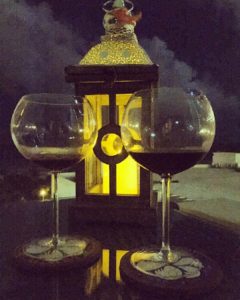
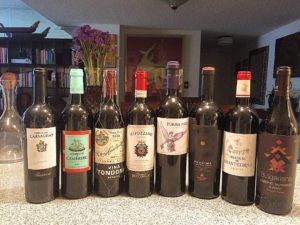 I’ll share some things that I’ve picked up along the way through tastings, wine appreciation classes, reading wine magazines and touring vineyards. I’m no expert. Not by a long stretch. I just love wine.
I’ll share some things that I’ve picked up along the way through tastings, wine appreciation classes, reading wine magazines and touring vineyards. I’m no expert. Not by a long stretch. I just love wine.
“Old World” versus “New World,” what in the world?! (Insert head scratching…) Old World wine countries are the birthplaces of wine, the “originals” so to speak – and they’ve been making wine for centuries. The better-known ones are Italy, France, Spain, Germany, Portugal and Greece.
Since Old World wine countries have a long history to fiercely protect (i.e. tradition, nostalgia and heritage) – you can just imagine the strict guidelines, laws and rules. We’re talking thousands of years here! Many wineries are family-owned and operated, with the growers passing down the legacy from generation to generation. So lovely, really!
These wines tend to have a common “structure” – lighter-bodied, lesser alcohol content (percentage), higher acidity levels, higher tannins (tannic = dry tasting) with a less fruity and more “terrior” taste (think Mother Nature’s surroundings: climate, earth, aromatic flowers, herbs and minerals.)


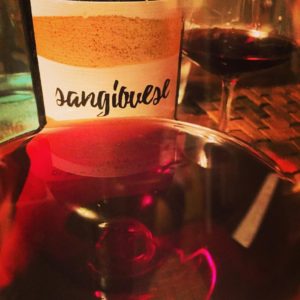 Moving on to the younger generation, the foremost “New World” wine countries are the U.S., Chile, Argentina, South Africa, Australia and Japan. These new kids on the block aren’t so young when you consider that some have been making wine since the 16th century or so! Let’s thank immigration for New World wine because the winemaking techniques and vine cuttings came from the Old World. However, New World wineries are trailblazers – all about a modern and experimental approach.
Moving on to the younger generation, the foremost “New World” wine countries are the U.S., Chile, Argentina, South Africa, Australia and Japan. These new kids on the block aren’t so young when you consider that some have been making wine since the 16th century or so! Let’s thank immigration for New World wine because the winemaking techniques and vine cuttings came from the Old World. However, New World wineries are trailblazers – all about a modern and experimental approach.
These countries tend to have warmer climates (and thus, riper grapes) and their wines are aged in new oak barrels (affecting flavor), fuller-bodied, (bold) fruit forward, and have higher alcohol levels. They have much less restrictions, and therefore, much more freedom in the winemaking process.
I enjoy both Old and New World wines. There’s something romantic about tasting an Old World wine that’s been made the same way for centuries. It’s like tasting history, really. But, I’m not a purist by any means. I’m the first to grab a bottle of New World wine for a swirl of innovation.
Consejito: If you’re traveling to a region that produces wine, visit a winery. Feel the vintner’s passion. Take a tour of the vineyards. Check out the barrels, grapes, vines and the soil. Ask questions as you’re enjoying the tasting experience. And, feel free to ship bottles home.

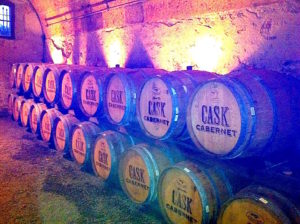

Leading Old World wine-producing countries are Italy, France and Spain, respectively. Let’s take a closer look at their most sought-after wines.
- Italy: Barbaresco, Brunello di Montalcino, Chianti, Sangiovese, Barolo, Valpolicella, Prosecco, Moscato, Trebbiano and Nero d’Avola
- France: Cabernet Sauvignon, Merlot, Sauvignon Blanc, Champagne, Bordeaux, Burgundy, Chablis, Beaujolais, Grenache, Côtes-du-Rhône, Rosé, Viognier and Pinot Noir
- Spain: Rioja, Tempranillo, Albariño, Cava, Verdejo, Airén, Sherry and Ribera del Duero
- Germany: Riesling, Müller-Thurgau and Spätburgunder
- Portugal: Port, Vinho Verde and Alvarinho
- Greece: Retsina and Savvatianó
The U.S. dominates the list of New World winemaking countries. From Chardonnay, Cabernet Sauvignon and Zinfandel to Pinot Noir, Sauvignon Blanc, Rosé and Merlot – California makes 90% of American wine! Cheers to that!
Some of the most recognized New World wines are:
- Chile: Carmenère, Sauvignon Blanc, Cabernet Sauvignon, Syrah, Chardonnay and Carignan
- Argentina: Malbec, Torrontes and Chardonnay
- South Africa: Chenin Blanc, Sauvignon Blanc, Shiraz, Colombard and Cabernet Sauvignon
- Australia: Shiraz, Merlot, Semillon, Cabernet Sauvignon and Chardonnay
- Japan: Chardonnay, Merlot, Pinot Noir and wines made from the white grape, Koshu
When buying wine at a local wine store, ask for the best selling bottle from a particular region (that fits within your budget, Chica!) For example, the best Chenin Blanc from South Africa, best Port from Portugal, best Rioja from Spain, and best Shiraz from Australia.



Now that you’ve bought your wine, you’ll want to know how to store it – whether for a few days, months or a few years. Protect it from direct sunlight, and lay the bottle on its side (horizontally) to prevent the cork from drying out and premature aging. Store in a wine cooler with a set temperature of 55°F. (I also store whites also in the fridge, but drink them within a few months.) And, before serving it, ensure red is between 62-68°F (not room temperature) for a perfect tasting temperature. If you don’t have a wine cooler, simply chill red in the fridge for an hour before serving it.
Speaking of red, a younger red needs 1-2 hours to breathe for a better bouquet, softer edge, maximum taste and smoother finish. While you can use a Vinturi, funnel or pourer (and swirling it in your glass will aerate it, too) a decanter is the preferred method.
Consejito: Host a wine exchange with your Chicas! Gift your favorite wine, and bring the wine to life by sharing the memories you have with the wine, when you first tasted it and why you love it. Have fun swapping bottles and stories, and meeting another great wine!
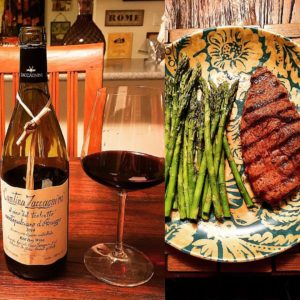

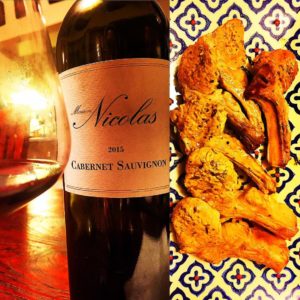
When pairing food and wine, you can either create a contrast or complement the two. But, one should never overpower the other since the conversation between plate and glass should flow. (If a restaurant has a sommelier, ask for his/her’s advice. I guarantee you will learn something new!)
Contrasting:
- Spicy food (Indian, Thai or Chinese) with a sweet Riesling
- A fatty meal (i.e. fried chicken) goes well with a crisp Sauvignon Blanc
- Cabernet Sauvignon is magnificent with herb-infused lamb chops
- Indulge in a rich cheese platter with a dry Rosé
- Salty tortilla chips and Champagne = a match made in heaven (um, who knew?!)
Complementing:
- A sweet dessert wine, like a Port with an actual sweet dessert
- Chicken in a creamy sauce is great with a creamy Chardonnay
- Match a delicate Pinot Grigio with a light seafood dish like shrimp
- Try a Malbec with a plate of BBQ ribs, yum!
- Pair the country’s food and wine – like an Italian meaty lasagna with a Sangiovese
If you’re looking for a fun and rewarding experience, attend a wine tasting on your own (and hey, make new friends!), with your Chicas or even on a date. You can learn so much from a trained expert: how to pour wine properly, inspect the wine for color and clarity, smell the wine’s bouquet of scented notes, taste the wine to pinpoint flavors, etc.
Curious for more? Subscribe to a wine magazine and take a wine appreciation class at a local culinary institute. You’ll really get to expand your knowledge (i.e. viticulture, viniculture, fermentation, irrigation, major red and white grape varietals, interpreting wine labels, the oaking process, vine density and so on…) Now, if you really want to take your passion and curiosity to the next level… think about becoming a sommelier!
Chicas, I don’t know about you, but I’m ready to open a bottle of wine now! So tell me, what wine tips can you share? I’d love to hear from you!
xo
Mamá decía, “El que un buen vino bebe, a beberlo vuelve.”

